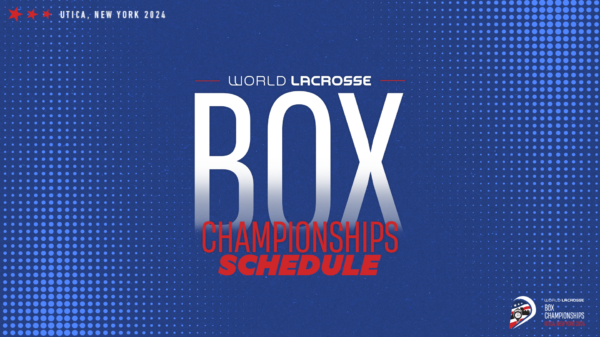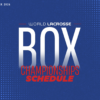World Lacrosse has proposed the inclusion of a shot clock in field lacrosse at the world championship (and qualifier) level for three primary reasons:
- Sport Visibility
- Betterment of the Game: Eliminates incentivization to ‘keep the ball’ using stall tactics instead of actually playing lacrosse; increases the number of events in a game; encourages lead changes and comebacks, making games more meaningful and dramatic until their conclusion.
- Consistency: All other disciplines have a shot clock; adding it in field lacrosse brings the experience of the athletes, coaches, officials and spectators into greater alignment.
- Modernization: Many modern team sports that involve possession have evolved to include a form of play clock.
- Commercial Viability: Broadcast and corporate partnerships (which lead to increased revenues and growth of the sport) rely on watchability/desirability to as wide of an audience as possible.
- Playability
- Incentivizes skill, strategy and organization in tactics, leading to increased development
- Offers positive athlete experience due to increased action, more opportunity to play within a game; sixes and box feedback has been positive.
- Removes the responsibility from the officials in having to determine if a team is stalling on their offensive possessions.
- Eliminates future needs for manual clearing counts to be administered by on-field officials.
- Can reduce the number of fouls and dangerous situations caused by defenders trying to gain possession of the ball from a stalling team.
- Competitive Balance
- Increased variability and opportunities to come back, allowing teams with lesser experienced or skilled players to potentially benefit.
- Ensures both teams have a fair share of offensive opportunities; with the now two-division model for world championships, teams with closer-matched skills would be more likely to stall when they get a lead.
Frequently Asked Questions
Format
What events would the new shot clock rule for field lacrosse apply to?
The rule would affect world championship play and their qualifiers. If passed, this proposal does not have a required impact on grassroots, recreational or other domestic/national programs.
What is the proposed length of shot clock?
At present, an 80-second clock has been proposed for both men and women. If the inclusion of a shot clock is approved, the WL Rules Committee will finalize all details, including length.
The length of possession at the world championship level often falls within 80 seconds, so it is not anticipated to have significant impact on regular play, but will ensure that closer games are played to their conclusion, rather than becoming a game of keep away.
Competitive Balance
Will teams from countries that already play with a shot clock in field have an advantage?
Most athletes (80%+) in countries in which shot clocks already exist in field lacrosse do not use a shot clock until they reach university play. Very few high school or below athletes use a shot clock in their most critical development stages (pre-university).
What will keep stronger teams from running up the score on lesser-skilled teams?
World championships are now a two-division model and there will be greater parity among the teams.
Personnel
How will we find and train more off-field people to operate shot clocks?
People who have operated clocks for sixes or box would be a great place to start recruiting. WL will provide a training resource via its Virtual Training Center for proper administration.
How are the officials going to reset clocks while officiating?
The administration of the clock would typically be managed by off-field personnel rather than an on-field official. In simplest form, a shot clock can be a stopwatch operated by either on- or off-field personnel.
Budget Implications
How much do shot clocks cost?
World championship standard shot clocks average US$2,500. Depending on manufacturer, geography or style selected, shot clocks for domestic use can cost significantly less.
If passed, what will WL do to support shot clock implementation at domestic levels of play?
As with sixes, WL will provide access to resources via the Continental Federation/National Governing Body grant program for members that apply to secure funding to purchase clocks.
In addition, in partnership with Germany Lacrosse, WL has a free shot clock app available on its website that could be displayed on low-cost monitors and is controlled via a mobile or other internet capable device.
Implementation Timeline
At what events would a shot clock be required?
Men: All world championships and their qualifiers held after January 1, 2026 (first relevant world championship is 2027 Men’s Championship).
Women: All world championships and their qualifiers held after January 1, 2027 (first relevant world championship is 2029 Women’s U20 Championship).
If passed, when and where does this take effect?
Men: Rule would be added to the 2025-2027 Rulebook, with implementation on the field of play by January 1, 2026.
Women: Rule would be added to the next Rulebook, with implementation on the field of play by January 1, 2027.






